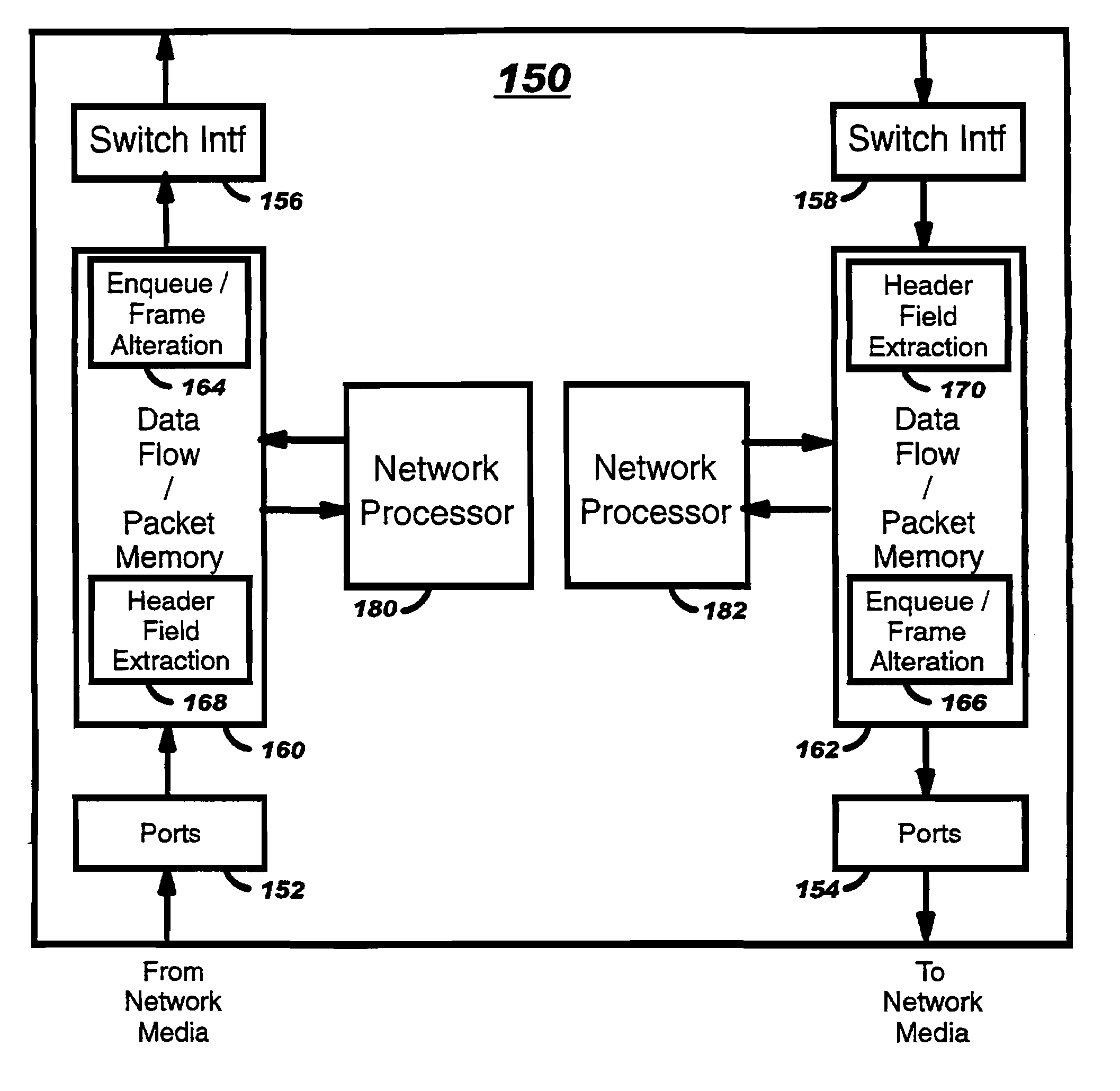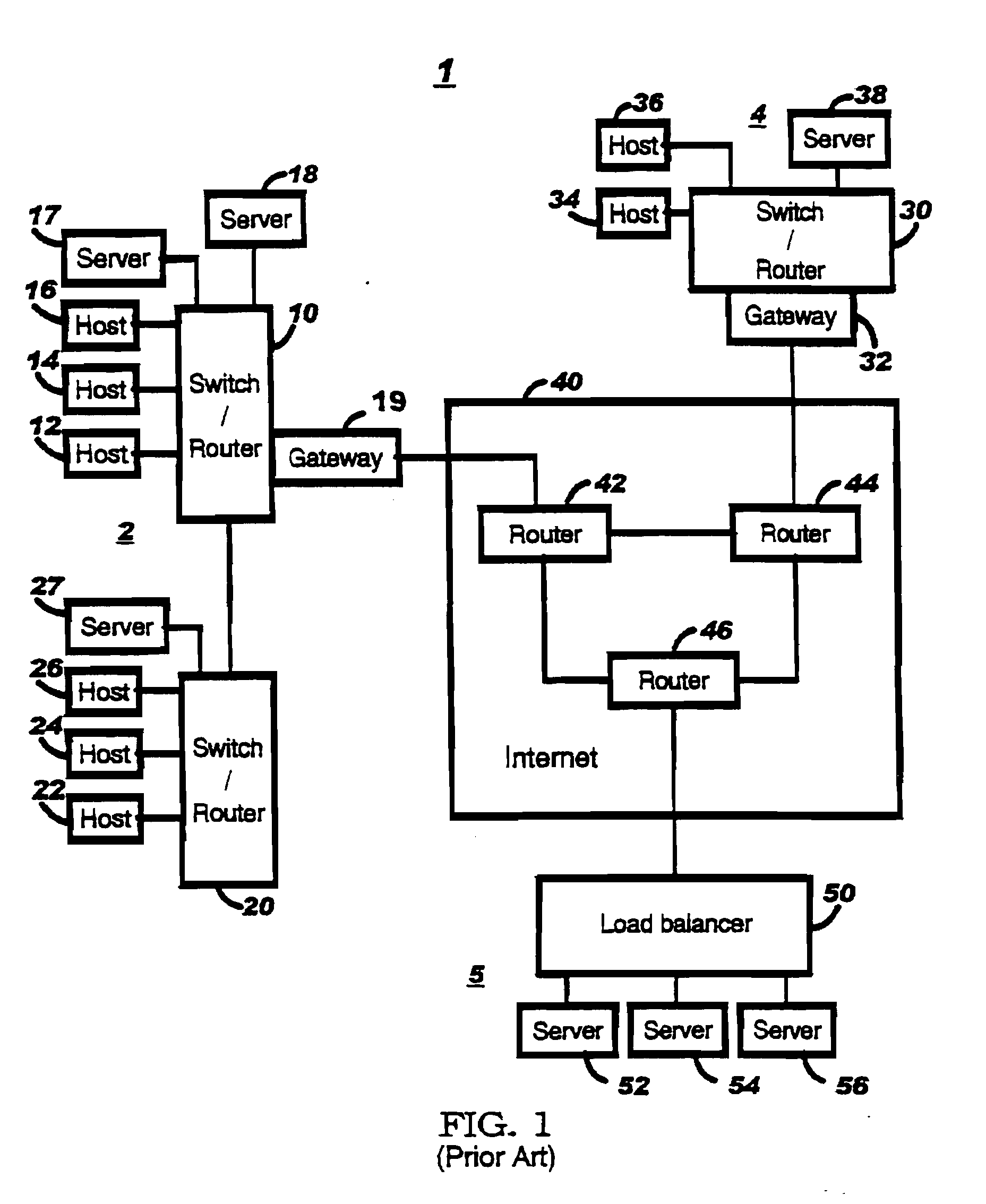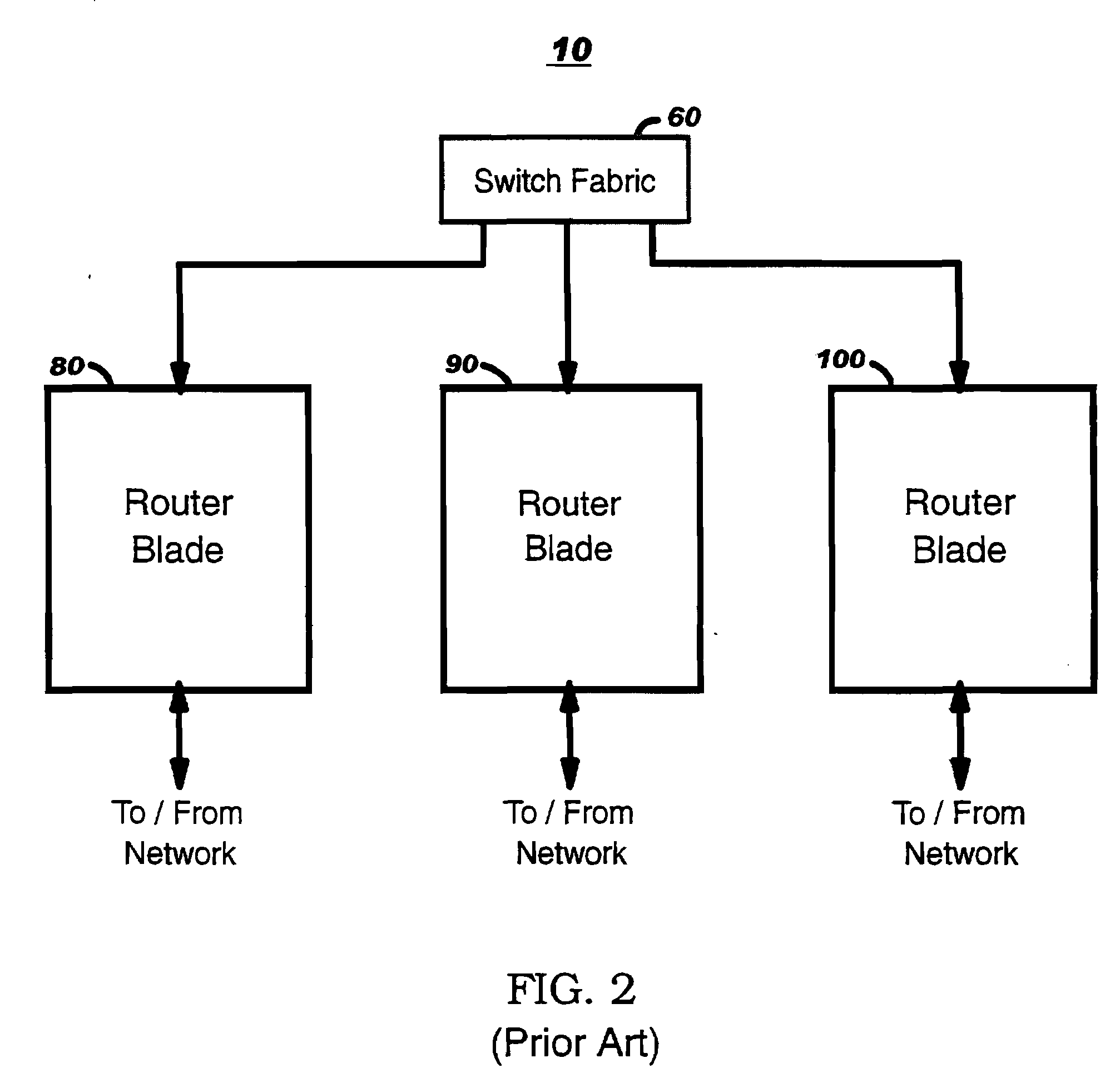Selective header field dispatch in a network processing system
a network processing system and header field technology, applied in the field of network processing systems, can solve the problems of increasing packet rate, cumbersome and relatively slow, increasing complexity, etc., and achieve the effect of reducing data throughput capacity and eliminating unnecessary parameter fields
- Summary
- Abstract
- Description
- Claims
- Application Information
AI Technical Summary
Benefits of technology
Problems solved by technology
Method used
Image
Examples
Embodiment Construction
[0038]FIG. 4-A is a depiction of a typical router blade 150 in accordance with the present invention. For very high data throughput such as OC-192 (10 Gigabits per second Packet-over-Sonet), router blade 150 is likely implemented with multiple chips, with ingress data flow 160, egress data flow 162, network processor 180, and network processor 182 each implemented as individual chips. Input ports 152 connect network links into ingress data flow 160, and switch interface 156 connects ingress data flow 160 to a switch fabric (not shown). Likewise, switch interface 158 connects switch fabric (not shown) to egress data flow 162, and output ports 154 connect egress data flow 162 to network links. Within data flow 160, 162 Enqueue / Frame Alteration unit 164, 166 and Header Field Extraction Unit 170, 168 control the flow of data to and from network processors 180, 182, as will be described in more detail below. For blades with lower data throughput such as OC-48 (2.5 Gigabits per second Pac...
PUM
 Login to View More
Login to View More Abstract
Description
Claims
Application Information
 Login to View More
Login to View More - R&D
- Intellectual Property
- Life Sciences
- Materials
- Tech Scout
- Unparalleled Data Quality
- Higher Quality Content
- 60% Fewer Hallucinations
Browse by: Latest US Patents, China's latest patents, Technical Efficacy Thesaurus, Application Domain, Technology Topic, Popular Technical Reports.
© 2025 PatSnap. All rights reserved.Legal|Privacy policy|Modern Slavery Act Transparency Statement|Sitemap|About US| Contact US: help@patsnap.com



